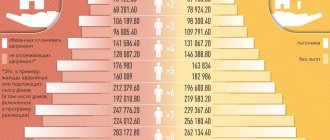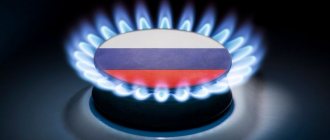Electricity tariffs in Moscow and the Moscow region are a system of price rates on the basis of which payments are made for electricity supply services provided to consumers. You can find out what they are like and what the cost of electricity depends on below.
What is your tariff?
The electricity tariff in Moscow and the Moscow region depends on several indicators, namely which consumer group you belong to:
- whether you live in a rural area, a suburb of Moscow or in the city of Moscow;
- have an electric or gas stove;
- how consumption is calculated: according to a single-rate, two-rate (different prices for consumed services day and night) or three-rate tariff (peak consumption, half-peak and night).
To calculate the cost of paying for electricity utilities in Moscow and the Moscow region, different tariffs apply (per year). First period: from January 1, 2022 to June 30, 2022, second period: from July 1, 2022 to December 31, 2022. In the new year 2022, in the first half of the year (period), there was no increase in electricity tariffs in Moscow and the Moscow region and tariffs remained at the same level as in the second half of 2021. Price changes are planned only from July 1, 2022.
In the territory of Moscow, Moscow region, Troitsky and Novomoskovsky administrative districts, the following types of electricity tariffs apply:
In the Moscow region, namely in settlements classified as rural areas, electricity is charged differently. Moscow pays 30% more than the provinces. The calculation takes place in kWh, based on the same parameters as in cities.
One room in an apartment building
In a high-rise building, not only apartments, but also other rooms, such as stairs and elevators, require power supply. Payment of these costs falls on the shoulders of property owners. The resource supplying organization in Moscow and the Moscow region is Mosenergosbyt.
ODN standards depend on the number of floors of an apartment building and the presence of an elevator. Three years ago, the state introduced specific standards for charging fees for common household resources.
In the absence of a common house meter, the electricity consumed by the ODN is calculated as follows: the share of electricity consumed in each owner’s home is calculated. Then the Criminal Code adds it to the readings of individual metering devices, if any, or to the standard. The amount received is indicated on the monthly receipt.
One-rate tariff for electricity in Moscow
| from 01.01.2022 to 30.06.2022 | from 07/01/2022 to 12/31/2022 | |
| Indicator (consumer groups broken down by rates and differentiated by day zones) | Price (tariff) in rub./kWh | Price (tariff) in rub./kWh |
| 1. Urban population | ||
| Around the clock | 5,92 | 6,17 |
| 2. Population living in urban settlements in houses equipped with stationary electric stoves and electric heating installations | ||
| Around the clock | 5,15 | 5,43 |
| 3. Population living in urban settlements in houses equipped with stationary electric stoves and not equipped with electric heating installations | ||
| Around the clock | 5,15 | 5,43 |
| 4. Population living in urban settlements in houses equipped with electric heating installations and not equipped with stationary electric stoves | ||
| Around the clock | 5,15 | 5,43 |
| 5. Population living in rural areas | ||
| Around the clock | 4,14 | 4,32 |
| 6. Providers of public services (homeowners’ associations, housing construction, housing or other specialized consumer cooperatives or management organizations) | ||
| Around the clock | 5,92 | 6,17 |
| 7. Guarantee suppliers, energy sales, energy supply organizations purchasing electrical energy (power) for the purpose of further sale to the population and categories of consumers equal to the population | ||
| Around the clock | 5,92 | 6,17 |
| 8. Consumers equal to the population purchasing electricity for use in outbuildings (cellars, sheds) | ||
| Around the clock | 5,92 | 6,17 |
Formula and calculator
The electricity calculator will calculate how much residents of Moscow and the Moscow region need to pay for electricity. Rates are listed below. If you have a single-tariff system, you just need to fill out the first three fields and click on the “calculate” button. If the system is two-tariff, fill out six fields; if it is a three-tariff system, then fill in all nine.
To calculate how much to pay for electricity, you need to take readings at the beginning of the billing period and at the end. Subtract the first from the second value. This figure shows how much electricity you burned. Then you multiply the resulting number by your tariff and get the amount to pay.
S=(AB) x C, where
S — amount to be paid
A - meter reading now
B - meter readings for the previous (already paid) period
C - tariff.
If you have a two- or three-tariff system, you need to calculate the amount for each tariff separately and add it up.
Download current tariffs:
- Order of DEPiR of Moscow dated December 18, 2020 No. 359-TR;
- Order of the Committee on Prices and Tariffs of the Moscow Region dated December 16, 2020 No. 256-R.
Tariff for two zones (peak and half-peak) for electricity in Moscow
| from 01.01.2022 to 30.06.2022 | from 07/01/2022 to 12/31/2022 | |
| Indicator (consumer groups broken down by rates and differentiated by day zones) | Price (tariff) in rub./kWh | Price (tariff) in rub./kWh |
| 1. Urban population | ||
| Daytime zone (peak and half-peak) | 6,81 | 7,10 |
| Night zone (peak and half-peak) | 2,48 | 2,69 |
| 2. Population living in urban settlements in houses equipped with stationary electric stoves and electric heating installations | ||
| Daytime zone (peak and half-peak) | 5,92 | 6,24 |
| Night zone (peak and half-peak) | 1,74 | 1,88 |
| 3. Population living in urban settlements in houses equipped with stationary electric stoves and not equipped with electric heating installations | ||
| Daytime zone (peak and half-peak) | 5,92 | 6,24 |
| Night zone (peak and half-peak) | 1,74 | 1,88 |
| 4. Population living in urban settlements in houses equipped with electric heating installations and not equipped with stationary electric stoves | ||
| Daytime zone (peak and half-peak) | 5,92 | 6,24 |
| Night zone (peak and half-peak) | 1,74 | 1,88 |
| 5. Population living in rural areas | ||
| Daytime zone (peak and half-peak) | 4,76 | 4,97 |
| Night zone (peak and half-peak) | 2,20 | 2,38 |
| 6. Providers of public services (homeowners’ associations, housing construction, housing or other specialized consumer cooperatives or management organizations) | ||
| Daytime zone (peak and half-peak) | 6,81 | 7,10 |
| Night zone (peak and half-peak) | 2,48 | 2,69 |
| 7. Guarantee suppliers, energy sales, energy supply organizations purchasing electrical energy (power) for the purpose of further sale to the population and categories of consumers equal to the population | ||
| Daytime zone (peak and half-peak) | 6,81 | 7,10 |
| Night zone (peak and half-peak) | 2,48 | 2,69 |
| 8. Consumers equal to the population purchasing electricity for use in outbuildings (cellars, sheds) | ||
| Daytime zone (peak and half-peak) | 6,81 | 7,10 |
| Night zone (peak and half-peak) | 2,48 | 2,69 |
Who benefits from it?
According to these calculations, we can conclude that the three-tariff system turned out to be the most profitable, since here the consumer can determine for himself in what period to turn on high-power devices and thereby save his budget. A two-tariff meter is also beneficial for those who do not intend to use electricity during certain phases. As for the single-phase meter, it is beneficial only to those consumers whose regional rates are significantly lower than on other systems. However, it is worth remembering that the payback period for a two- and three-tariff meter can take up to 5-6 years.
Tariff for three zones (peak, half-peak, night) for electricity in Moscow
| from 01.01.2022 to 30.06.2022 | from 07/01/2022 to 12/31/2022 | |
| Indicator (consumer groups broken down by rates and differentiated by day zones) | Price (tariff) in rub./kWh | Price (tariff) in rub./kWh |
| 1. Urban population | ||
| Peak zone | 7,10 | 7,40 |
| Half-peak zone | 5,92 | 6,17 |
| Night zone | 2,48 | 2,69 |
| 2. Population living in urban settlements in houses equipped with stationary electric stoves and electric heating installations | ||
| Peak zone | 6,18 | 6,52 |
| Half-peak zone | 5,15 | 5,43 |
| Night zone | 1,74 | 1,88 |
| 3. Population living in urban settlements in houses equipped with stationary electric stoves and not equipped with electric heating installations | ||
| Peak zone | 6,18 | 6,52 |
| Half-peak zone | 5,15 | 5,43 |
| Night zone | 1,74 | 1,88 |
| 4. Population living in urban settlements in houses equipped with electric heating installations and not equipped with stationary electric stoves | ||
| Peak zone | 6,18 | 6,52 |
| Half-peak zone | 5,15 | 5,43 |
| Night zone | 1,74 | 1,88 |
| 5. Population living in rural areas | ||
| Peak zone | 4,97 | 5,18 |
| Half-peak zone | 4,14 | 4,32 |
| Night zone | 2,20 | 2,38 |
| 6. Providers of public services (homeowners’ associations, housing construction, housing or other specialized consumer cooperatives or management organizations) | ||
| Peak zone | 7,10 | 7,40 |
| Half-peak zone | 5,92 | 6,17 |
| Night zone | 2,48 | 2,69 |
| 7. Guarantee suppliers, energy sales, energy supply organizations purchasing electrical energy (power) for the purpose of further sale to the population and categories of consumers equal to the population | ||
| Peak zone | 7,10 | 7,40 |
| Half-peak zone | 5,92 | 6,17 |
| Night zone | 2,48 | 2,69 |
| 8. Consumers equal to the population purchasing electricity for use in outbuildings (cellars, sheds) | ||
| Peak zone | 7,10 | 7,40 |
| Half-peak zone | 5,92 | 6,17 |
| Night zone | 2,48 | 2,69 |
Link to the archive of electricity tariffs in 2021 in Moscow and the Moscow region.
Rules for choosing an electric meter
There are a huge number of electric meters on the modern market, varying in characteristics and technical properties. Basic parameters for choosing metering devices:
- type of device - induction or electronic (an electronic meter is famous for its high accuracy of readings, while an induction meter wins in price and durability),
- number of tariffs - single-phase, two-phase or three-phase,
- connection method - direct or through current transformers,
- phase type - single-phase or three-phase,
- accuracy class - affects the level of measurement error of the device (for residential premises a class of at least 2.0 is recommended),
- voltage class - 220 V (380 V) or 100 V.
There are other characteristics for choosing metering devices, but these are the main ones that should be taken into account first when choosing a model.
One-rate electricity tariff for the Moscow region
| from 01.01.2022 to 30.06.2022 | from 07/01/2022 to 12/31/2022 | |
| Indicator (consumer groups broken down by rates and differentiated by day zones) | Price (tariff) in rub./kWh | Price (tariff) in rub./kWh |
| 1. Urban population | ||
| Around the clock | 5,93 | 6,17 |
| 2. Population living in urban settlements in houses equipped with stationary electric stoves and electric heating installations | ||
| Around the clock | 4,29 | 4,60 |
| 3. Population living in urban settlements in houses equipped with stationary electric stoves and not equipped with electric heating installations | ||
| Around the clock | 4,29 | 4,60 |
| 4. Population living in urban settlements in houses equipped with electric heating installations and not equipped with stationary electric stoves | ||
| Around the clock | 4,29 | 4,60 |
| 5. Population living in rural areas | ||
| Around the clock | 4,15 | 4,32 |
| 6. Providers of public services (homeowners’ associations, housing construction, housing or other specialized consumer cooperatives or management organizations) | ||
| Around the clock | 5.93 | 6,17 |
| 7. Guarantee suppliers, energy sales, energy supply organizations purchasing electrical energy (power) for the purpose of further sale to the population and categories of consumers equal to the population | ||
| Around the clock | 5.93 | 6,17 |
| 8. Consumers equal to the population purchasing electricity for use in outbuildings (cellars, sheds) | ||
| Around the clock | 5.93 | 6,17 |
Additional paperwork when purchasing a share in an apartment
The procedure is somewhat more complicated than when purchasing an entire apartment; preparatory work is required.
- It is not enough just to sign a purchase and sale agreement; it must be certified by a notary.
- Written refusal of the owners of other shares of the apartment to purchase (original and copy). The document must indicate the cadastral number of the apartment, the price proposed by the owner and the payment procedure.
Owners of other shares of the apartment have a pre-emptive right to purchase the share that is the subject of the transaction. Therefore, the seller must, before selling his share to a third party, offer in writing to buy this living space to other co-owners of the apartment. He is obliged to offer conditions no worse than those on which he will actually sell his share to a third party.
If the co-owners refuse to give a written answer, then you can do without it - it is enough to provide evidence that they were offered to buy the share. It is best to send the notification through a notary, especially since the purchase and sale agreement will also have to be notarized. You can send an offer to buy a share without a notary, by mail with notification and an inventory of the investment, but this method can lead to legal disputes. If there is no response to an offer to buy a share within 30 days, this is considered a refusal.
Tariff for two zones (peak and half-peak) for electricity in the Moscow region
| from 01.01.2022 to 30.06.2022 | from 07/01/2022 to 12/31/2022 | |
| Indicator (consumer groups broken down by rates and differentiated by day zones) | Price (tariff) in rub./kWh | Price (tariff) in rub./kWh |
| 1. Urban population | ||
| Daytime zone (peak and half-peak) | 6,82 | 7,10 |
| Night zone (peak and half-peak) | 2,65 | 2,82 |
| 2. Population living in urban settlements in houses equipped with stationary electric stoves and electric heating installations | ||
| Daytime zone (peak and half-peak) | 4,93 | 5,29 |
| Night zone (peak and half-peak) | 1,91 | 2,11 |
| 3. Population living in urban settlements in houses equipped with stationary electric stoves and not equipped with electric heating installations | ||
| Daytime zone (peak and half-peak) | 4,93 | 5,29 |
| Night zone (peak and half-peak) | 1,91 | 2,11 |
| 4. Population living in urban settlements in houses equipped with electric heating installations and not equipped with stationary electric stoves | ||
| Daytime zone (peak and half-peak) | 4,93 | 5,29 |
| Night zone (peak and half-peak) | 1,91 | 2,11 |
| 5. Population living in rural areas | ||
| Daytime zone (peak and half-peak) | 4,77 | 4,97 |
| Night zone (peak and half-peak) | 1,85 | 2,00 |
| 6. Providers of public services (homeowners’ associations, housing construction, housing or other specialized consumer cooperatives or management organizations) | ||
| Daytime zone (peak and half-peak) | 6,82 | 7,10 |
| Night zone (peak and half-peak) | 2,65 | 2,82 |
| 7. Guarantee suppliers, energy sales, energy supply organizations purchasing electrical energy (power) for the purpose of further sale to the population and categories of consumers equal to the population | ||
| Daytime zone (peak and half-peak) | 6,82 | 7,10 |
| Night zone (peak and half-peak) | 2,65 | 2,82 |
| 8. Consumers equal to the population purchasing electricity for use in outbuildings (cellars, sheds) | ||
| Daytime zone (peak and half-peak) | 6,82 | 7,10 |
| Night zone (peak and half-peak) | 2,65 | 2,82 |
The essence of multi-tariff accounting
It's no secret that electricity consumption differs at different times of the day. Some people use it during the day, while others use it at night. In this regard, meters have been developed that will relieve the power supply during the evening rush hour and thereby increase the reliability of the power supply as a whole.
Who installs
The installation of devices is carried out by representatives of regional operators. For example, in Moscow the regional operator is Mosenergo. Replacement of the meter is carried out on a paid basis. To do this, you need to submit an application to the regional operator, pay the cost of the device and the work of the specialist. After which the specialist goes to the installation site and makes all the necessary settings.
Regulatory acts
The obligation to install an electric meter is regulated by Federal Law on Energy Saving No. 261-FZ dated November 23, 2009, Federal Law No. 102-FZ dated June 26, 2008, as well as Government Decree No. 442 of the Russian Federation dated May 4, 2012.
Tariff for three zones (peak, half-peak, night) for electricity in the Moscow region
| from 01.01.2022 to 30.06.2022 | from 07/01/2022 to 12/31/2022 | |
| Indicator (consumer groups broken down by rates and differentiated by day zones) | Price (tariff) in rub./kWh | Price (tariff) in rub./kWh |
| 1. Urban population | ||
| Peak zone | 7,71 | 8,03 |
| Half-peak zone | 5,93 | 6,17 |
| Night zone | 2,65 | 2,82 |
| 2. Population living in urban settlements in houses equipped with stationary electric stoves and electric heating installations | ||
| Peak zone | 5,58 | 5,98 |
| Half-peak zone | 4,29 | 4,60 |
| Night zone | 1,91 | 2,11 |
| 3. Population living in urban settlements in houses equipped with stationary electric stoves and not equipped with electric heating installations | ||
| Peak zone | 5,58 | 5,98 |
| Half-peak zone | 4,29 | 4,60 |
| Night zone | 1,91 | 2,11 |
| 4. Population living in urban settlements in houses equipped with electric heating installations and not equipped with stationary electric stoves | ||
| Peak zone | 5,58 | 5,98 |
| Half-peak zone | 4,29 | 4,60 |
| Night zone | 1,91 | 2,11 |
| 5. Population living in rural areas | ||
| Peak zone | 5,40 | 5,62 |
| Half-peak zone | 4,15 | 4,32 |
| Night zone | 1,85 | 2,00 |
| 6. Providers of public services (homeowners’ associations, housing construction, housing or other specialized consumer cooperatives or management organizations) | ||
| Peak zone | 7,71 | 8,03 |
| Half-peak zone | 5,93 | 6,17 |
| Night zone | 2,65 | 2,82 |
| 7. Guarantee suppliers, energy sales, energy supply organizations purchasing electrical energy (power) for the purpose of further sale to the population and categories of consumers equal to the population | ||
| Peak zone | 7,71 | 8,03 |
| Half-peak zone | 5,93 | 6,17 |
| Night zone | 2,65 | 2,82 |
| 8. Consumers equal to the population purchasing electricity for use in outbuildings (cellars, sheds) | ||
| Peak zone | 7,71 | 8,03 |
| Half-peak zone | 5,93 | 6,17 |
| Night zone | 2,65 | 2,82 |
How to change the accounting system
To switch to another metering system, you will need to change the meter itself. The first step is to contact your electricity supplier to inform him of your intention to change the meter. The specialist will ask you to write a statement. When handling, you must have the following documents:
- passport of a citizen of the Russian Federation,
- documents confirming ownership of the premises.
The specialist will accept the application and require you to pay the cost of the service. Next, a qualified electrician is sent, who in a short time will connect and configure the new device, draw up a report and give the necessary recommendations. Next month, readings must be submitted using the new system.










